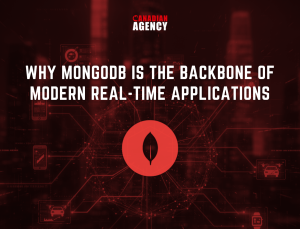The internet, as we know it today, has undergone multiple evolutions. In the early 1990s, the World Wide Web introduced the world to static websites where information was consumed but rarely interacted with. The 2000s brought Web2, a more social, connected, and interactive internet. Platforms like Facebook, YouTube, and Twitter transformed users from passive consumers into active participants. However, this convenience came at a cost—data ownership and control shifted into the hands of a few powerful corporations, raising concerns about privacy, monopolization, and user dependency.
Now, we stand at the edge of a new era: Web3, powered by blockchain technology. Unlike its predecessors, Web3 seeks to return ownership and control to the users. It is decentralized, transparent, and built to empower individuals rather than corporations. This shift is more than just a technological update—it represents a philosophical rethinking of the internet’s role in our lives.
With blockchain as its backbone, Web3 opens the door to digital ownership, smart contracts, decentralized finance (DeFi), non-fungible tokens (NFTs), and decentralized autonomous organizations (DAOs). For businesses and developers, this isn’t just hype—it’s an opportunity to build the foundations of the future internet. For users, it’s a chance to reclaim digital freedom.
As industries explore blockchain applications across finance, healthcare, supply chains, and media, Web3 is steadily proving itself as the internet’s next chapter. The question isn’t whether it will transform the digital world—it’s how quickly organizations and individuals will adapt to it.
From Web1 to Web3: A Quick Overview
- Web1 (The Static Web): The early internet (1990s) consisted of static websites, where users were primarily consumers of information. Interaction was minimal.
- Web2 (The Social Web): Platforms like Facebook, YouTube, and Twitter introduced interactivity, social networking, and user-generated content. However, power became centralized in the hands of a few corporations that controlled data and platforms.
- Web3 (The Decentralized Web): Built on blockchain, Web3 seeks to eliminate central authority. It emphasizes peer-to-peer interactions, ownership of data, digital assets, and trustless systems.
This transition is as revolutionary as moving from desktop software to cloud-based apps. Web3 is not just about technology—it’s about reshaping the digital economy.
What is Blockchain, and Why Does It Matter?
At the core of Web3 lies blockchain—a distributed ledger technology that records transactions across a network of computers in a secure, transparent, and immutable way. Unlike centralized databases, blockchains do not rely on a single authority to validate or store information.
Key features include:
- Decentralization – No single entity owns the data.
- Transparency – Transactions are visible and verifiable by all participants.
- Immutability – Once recorded, data cannot be altered without consensus.
- Security – Cryptography ensures trust without intermediaries.
This matters because blockchain creates a digital environment where trust is built into the system itself. Whether it’s financial transactions, digital contracts, or supply chain tracking, blockchain removes the need for intermediaries and ensures integrity.
How Web3 Changes the Game
Web3 goes beyond blockchain as a technology. It introduces a new philosophy of the internet where users reclaim ownership and control. Some of its key innovations include:
1. Decentralized Finance (DeFi)
Traditional banks and payment systems rely on centralized institutions. In contrast, DeFi allows users to lend, borrow, trade, and earn interest through decentralized applications (dApps) without intermediaries.
2. Non-Fungible Tokens (NFTs)
NFTs give digital assets uniqueness and ownership. They are being used not just in art and gaming, but also in identity verification, supply chain management, and intellectual property rights.
3. Smart Contracts
Self-executing contracts coded on the blockchain enable trustless agreements. For example, in real estate, payments can be automatically released once conditions are met—without legal or banking intermediaries.
4. Decentralized Autonomous Organizations (DAOs)
DAOs are governance structures where decisions are made collectively by token holders rather than centralized executives. They represent a new way of running organizations.
5. Tokenization of Assets
From real estate to music rights, Web3 allows assets to be digitized and traded on blockchain networks, unlocking new markets and liquidity opportunities.
Real-World Use Cases of Web3
- Supply Chain Management – Companies like IBM and Maersk use blockchain to track goods in real time, reducing fraud and increasing efficiency.
- Healthcare – Blockchain secures patient records, ensuring privacy while allowing authorized access across providers.
- Finance – Startups and fintechs are adopting DeFi platforms to enable faster, borderless, and low-cost financial services.
- Entertainment and Media – Artists can distribute their work directly to audiences, bypassing traditional platforms.
- Identity Management – Self-sovereign identities on Web3 give users complete control over their digital credentials, reducing reliance on centralized logins.
These use cases show that blockchain is no longer limited to cryptocurrencies—it is shaping industries globally.
Challenges on the Road to Web3
While Web3 holds enormous potential, it also presents challenges that businesses and developers must address:
- Scalability – Current blockchain networks struggle with handling large transaction volumes quickly.
- Energy Consumption – Proof-of-Work blockchains like Bitcoin raise environmental concerns. However, newer models such as Proof-of-Stake are emerging.
- Regulation – Governments worldwide are still grappling with how to regulate cryptocurrencies, NFTs, and decentralized platforms.
- User Experience – Blockchain applications often have steep learning curves, making adoption slower among non-technical users.
- Security Risks – Although blockchain itself is secure, poorly written smart contracts and scams in DeFi have led to significant financial losses.
The Role of Software Development Agencies
As Web3 grows, the need for skilled development partners becomes critical. Agencies can help businesses by:
- Building dApps: Designing decentralized applications that are intuitive and user-friendly.
- Integrating Smart Contracts: Developing secure contracts tailored to business logic.
- Creating NFTs and Tokenization Solutions: Helping brands and enterprises tokenize their assets.
- Ensuring Compliance: Guiding businesses through the evolving regulatory landscape.
- Optimizing User Experience: Bridging the gap between complex blockchain systems and seamless customer interaction.
Software development agencies act as translators—converting cutting-edge blockchain technology into practical, accessible business solutions.
Future Outlook: What’s Next for Web3?
Looking ahead, Web3 is poised to transform digital interactions in several ways:
- Mainstream Adoption: As usability improves, blockchain-based apps will become as common as mobile banking apps today.
- Cross-Chain Interoperability: Future systems will allow blockchains to communicate seamlessly, breaking down silos.
- Integration with AI and IoT: Smart contracts interacting with connected devices could automate everything from logistics to home management.
- Decentralized Identity and Privacy: Users will control their own digital footprints, reducing dependency on centralized corporations.
The question is not if Web3 will become mainstream—it’s when. Businesses that prepare today will be tomorrow’s leaders.
Conclusion
Blockchain and Web3 are more than just technological buzzwords; they are transformative forces shaping the future of the digital economy. Much like how Web2 gave rise to social networks, e-commerce giants, and on-demand services, Web3 has the potential to unlock entirely new business models and ecosystems. By embracing decentralization, transparency, and digital ownership, this next iteration of the internet promises to give individuals more control while enabling organizations to innovate in ways previously unimaginable.
Yet, the road ahead will not be without challenges. Scalability issues, regulatory uncertainty, and the need for user education stand as hurdles to mainstream adoption. Additionally, businesses must learn to balance the technical complexity of blockchain with the simplicity and usability customers demand. Trust will also play a pivotal role—ensuring that decentralized solutions are not only secure but also accessible to people from all walks of life.
This is where software development agencies step into the picture. They act as enablers, helping businesses translate blockchain’s potential into practical solutions. From building decentralized applications to designing user-friendly interfaces and ensuring compliance, agencies provide the expertise necessary to navigate the evolving Web3 landscape.
The future of the internet will be shaped by those who act decisively today. Organizations that invest in blockchain and Web3 early will not only stay ahead of competitors but also participate in shaping an inclusive, user-driven digital world. Web3 is not just an upgrade—it is the internet’s next chapter, and it belongs to those ready to embrace it.




